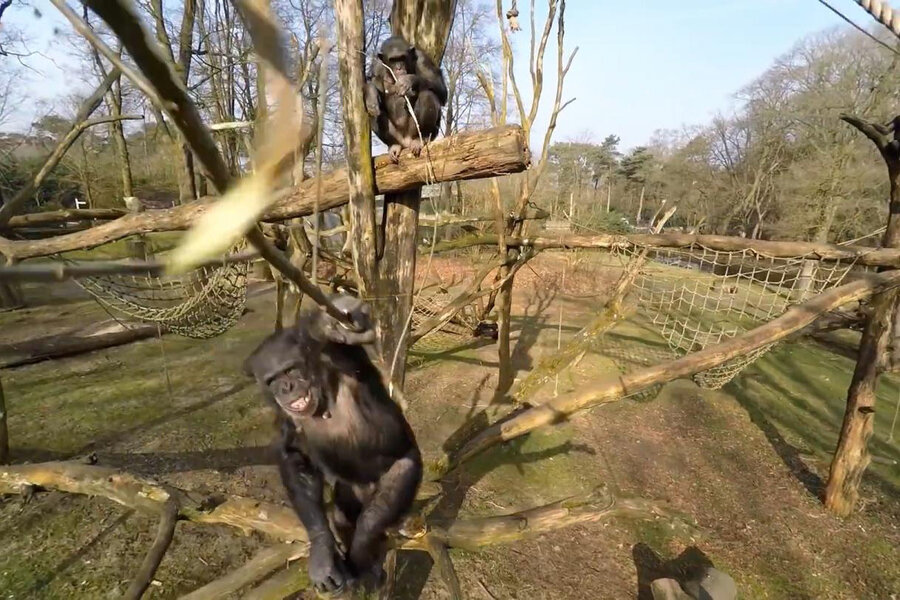How Tushi the chimp foiled a television crew
Scientists dive to the bottom of the ocean to study fish, photographers stick huge lenses in lions’ faces, and webcams broadcast eaglets hatching across the world.
But can human technology get too close?
Tushi the chimpanzee might say camera-laden drones cross the line.
In April, Tushi used a willow stick to knock just such a flier out of the air.
But the female chimpanzee did not simply swing at an annoyance, like someone might swat at a pesky mosquito. Tushi’s actions were calculated, according to a study released Thursday in the journal Primates.
“The use of the stick as a weapon in this context was a unique action,” study co-author Jan van Hooff said in a news release. “It seemed deliberate, given the decision to collect it and carry it to a place where the drone might be attacked.”
Furthermore, when the researchers studied the video captured by the drone, they noticed that although Tushi grimaced from physical exertion, they could not detect fear in her expression.
Tushi encountered the aerial drone when a television crew set about filming the chimps at the Royal Burgers’ Zoo in the Netherlands. The crew hoped to get a closer look at the animals by using the drone.
The chimpanzees first reacted to the strange flying device during a test run. That’s when they began collecting willow branches. Some climbed up scaffolding to get closer to the drone.
When the next drone entered the enclosure, already filming, the chimpanzees were ready. Tushi swung her stick, which was about six feet long, at the device. She took it down on her second swing.
The chimpanzees examined the foreign object until they had satisfied their curiosity.
Chimpanzees aren’t the only animals to attack a drone. A Hawk attacked a drone filming fall foliage in October 2014 in Cambridge, Mass. In August, The Christian Science Monitor reported that a wedge-eailed eagle also disabled a drone.
Birds may be most likely to encounter the aerial devices, but camera probes into the deep blue sea encounter animals as well. Great white sharks tried to chomp on underwater cameras in a compilation video released on the Discovery Channel’s website in August 2014.






